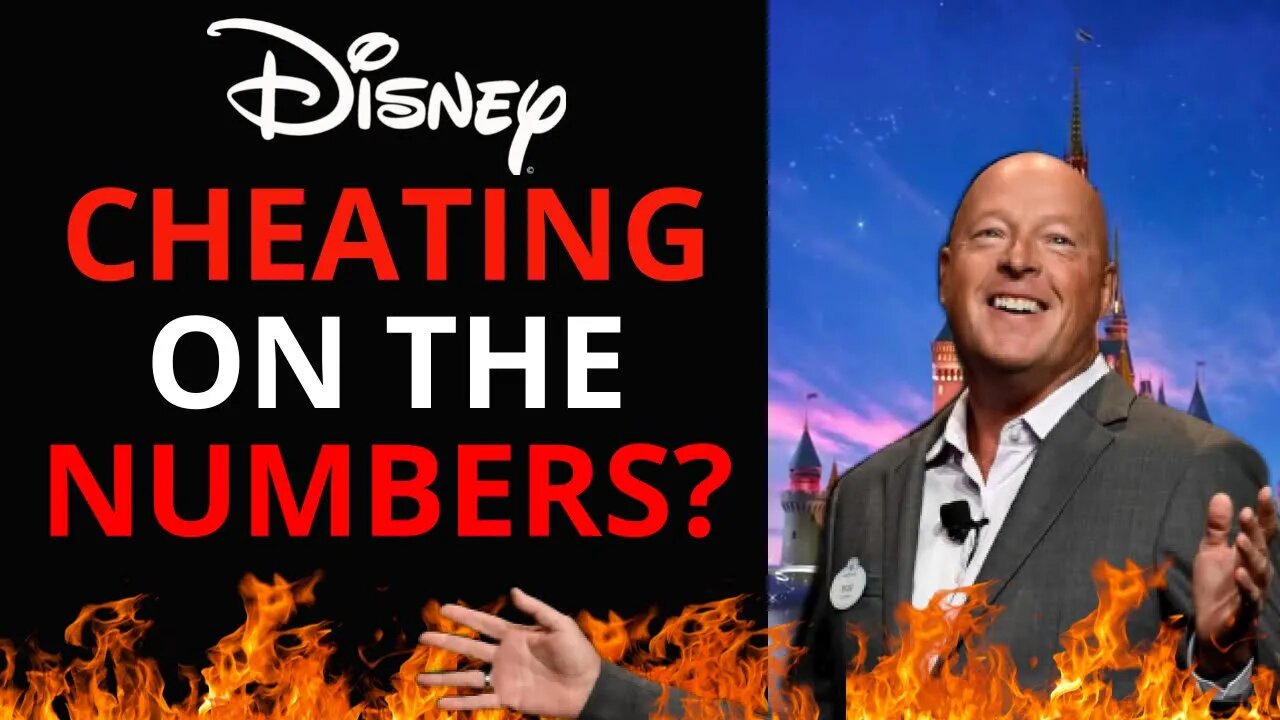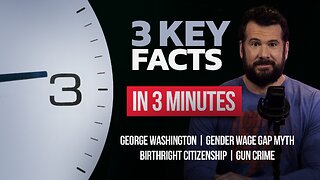Premium Only Content

DISNEY Cheating On The Numbers? Disney+ Subscribers Counted Up To THREE TIMES!
No, Disney didn’t just surpass Netflix in total subscribers—unless you can justify 1+1=3. Inside the semantic-financial civil war over the most powerful number in streaming.
Bob Chapek’s Funny Math on Streaming
https://puck.news/bob-chapeks-funny-math-on-streaming/
Bob Chapek is Intentionally Misrepresenting Disney+ Success, Expert Says
https://insidethemagic.net/2022/08/analytics-expert-chapek-disney-plus-jc1/
SUBSCRIBE TO ADAM POST SPEAKS:
https://www.youtube.com/c/AdamPostSpeaks
Follow ADAM POST on Twitter:
https://twitter.com/comicswelove
It’s been a rocky road for Disney C.E.O. Bob Chapek, but he got a real victory lap moment last week after Disney reported that streaming subscriptions totalled 221.7 million, beating Netflix for the first time, exceeding Wall Street’s expectations, and causing Disney stock to jump nearly 10 percent. That milestone would have been unthinkable just a few years ago. Bob Iger, despite his legendary business acumen and M&A masterstrokes, was late to the streaming game, only launching Disney+ in November 2019. Since then, however, Disney+ has grown at a startling rate of 22.1 million subscribers per quarter. That stat is a big reason why Chapek earned a new three-year contract from the Disney board.
But statistics hide all sorts of complexities about Disney’s numbers, and it’s no secret that the way the public narrative surrounding how the company calculates total subscribers to its “Streaming Services”—a business unit that encompasses Disney+, Hulu, ESPN+, Disney+ HotStar, and Star+—is more than a little misleading. I want to be very explicit: I’m not suggesting that Disney’s streaming business is in trouble. If I had to bet on three services that will still be here in a decade, Disney+ would be included without hesitation. But how we talk about streaming is important in how we think about streaming success. Yes, Disney’s collection of services total more subscribers than Netflix, according to headlines everywhere. But that’s also not the whole story.
How Many Subscribers Is One Subscriber?
The key to Chapek’s master plan for growing audiences is the Disney Streaming Bundle, a reduced-cost package that includes Disney+, ESPN+ and Hulu—$14 per month with ads, or for $20 per month without ads. It’s basically a “buy two, get one free” offering—perhaps the best deal in the streaming industry, which is why the Disney bundle also has the lowest overall churn rate (about 2.2 percent, according to Antenna data) of all the major services.
But here’s the trick. If you subscribe to the Disney bundle, the company counts you as three subscribers—an ESPN+ subscriber, a Hulu subscriber, and Disney+ subscriber. That’s true, in a sense, but not exactly fair if you’re trying to make a direct comparison with Netflix or another streamer.
Why does that distinction matter? Streaming, as a business, is wholly dependent on subscriber numbers and revenue, and both are dependent on churn. The math is relatively simple for Netflix, where one customer equals one subscription, generating $15.95 per month in revenue in the U.S. But for a company like Disney, which has multiple products built into one product, the math becomes more nuanced: a single customer spending $14 per month on the lower-priced Disney Streaming Bundle may only use two services, and get the third for free, but they’re counted as three paying, engaged subscribers. Disney breaks out the ARPU (average revenue per user) for both ESPN+ ($4.55) and Hulu ($12.92), but we don’t know the allocated ARPU within the bundle or how many customers to ESPN+ and Hulu are part of the bundle.
Disney reports subscriber numbers each quarter, but they’re still shrouded in mystery. The media framing the subscriber count as “beating Netflix” generates attention. It doesn’t necessarily drive actual business value. Giving away a free subscription (like ESPN+) as part of a bundle increases the perceived value of the product to consumers (hence the low churn) but doesn’t generate more revenue, and neither does counting subscriptions as subscribers. Some may chalk this point up to semantics, but subscriber semantics matter in streaming since it’s a relatively new industry and we’re still learning to talk about it.
The more fundamental question is why someone chooses to pay for a service, which is really a question about the perceived value of a content offering. A customer choosing to buy the Disney Streaming Bundle instead of Disney+ or Hulu on their own presumably sees value in having access to more than one platform, but also views it as one unified product. Therefore, a Disney Streaming Bundle subscriber is really just one subscriber, not three, even if they are technically producing three subscriptions. To count it as three, especially when we don’t know if one of those services is ever being used or has ever been opened, isn’t a fair comparison to Netflix.
-
 1:29:15
1:29:15
Simply Bitcoin
6 hours ago $6.51 earnedThey JUST Triggered A Global Gold Rush: $1M Bitcoin is coming! | EP 1184
68K23 -
 1:50:47
1:50:47
The Quartering
6 hours agoElon Musk's 13th Baby, Trump Attends Daytona 500, and Ramaswamy Enters the Ohio Governor's Race
91.2K38 -
 1:28:04
1:28:04
Russell Brand
6 hours agoBREAKING: UK Troops To Ukraine | Zelensky Wants “Army Of Europe” | JD Vance SLAMS EU Tyranny – SF538
164K51 -
 1:46:20
1:46:20
Benny Johnson
7 hours agoPANIC: Feds FLEE DC After Mass PURGE, Fired USAID Activists EXPOSED | Trump DOMINATES Daytona 500
153K157 -
 1:58:43
1:58:43
The Charlie Kirk Show
6 hours agoCBS Steps In It + Hockey Brawl + Judicial Standoff | Yoo, Schlapp, BigTree | 2.17.2025
147K46 -
 1:01:26
1:01:26
The Dan Bongino Show
9 hours agoTrump Is Cancelling DEI And Cancel Culture (Ep. 2424) - 02/17/2025
908K1.76K -
 1:06:12
1:06:12
Timcast
8 hours agoDemocrat Swamp IMPLODES, CBS Runs DAMAGE Control For Democrats, Gets ROASTED By Elon | Timcast LIVE
177K191 -
 2:00:58
2:00:58
RealAmericasVoice
14 hours agoWAR ROOM WITH STEVE BANNON AM EDITION
149K25 -
 2:59:47
2:59:47
Wendy Bell Radio
13 hours agoAmerica Drops The Gloves
131K67 -
 1:22:27
1:22:27
Steven Crowder
8 hours agoGeorge Washington, Our First President | 3 in 3 Special
357K266